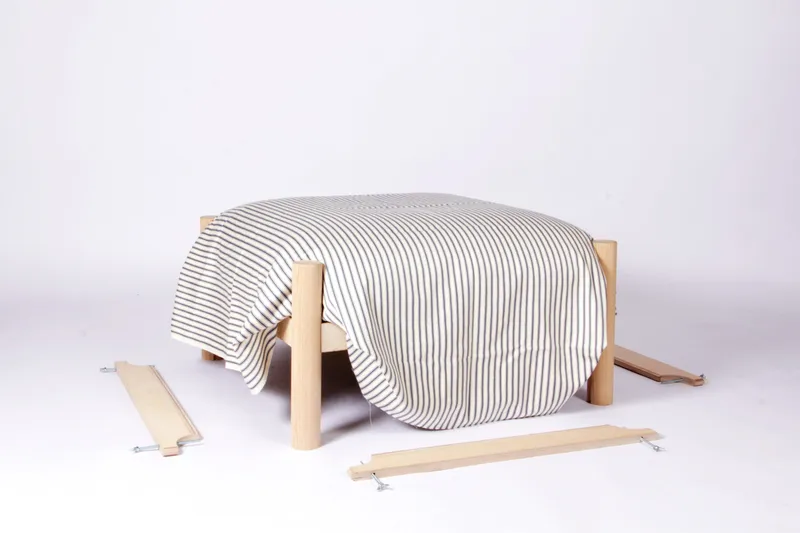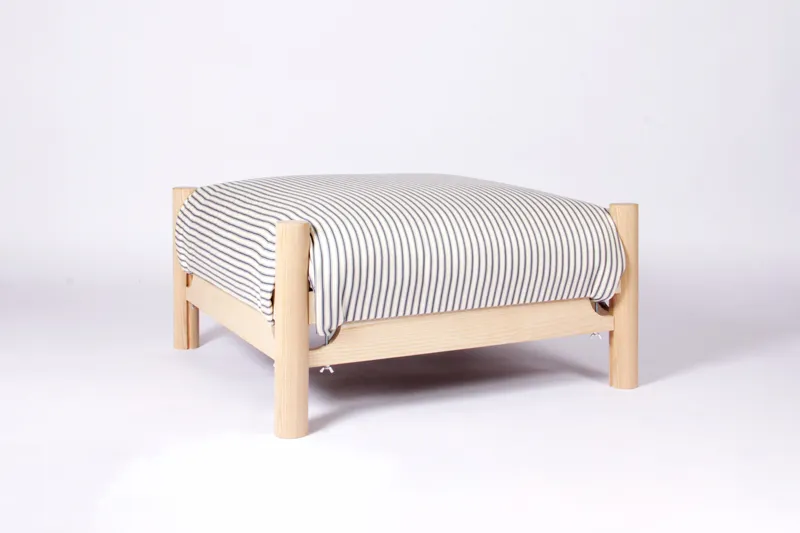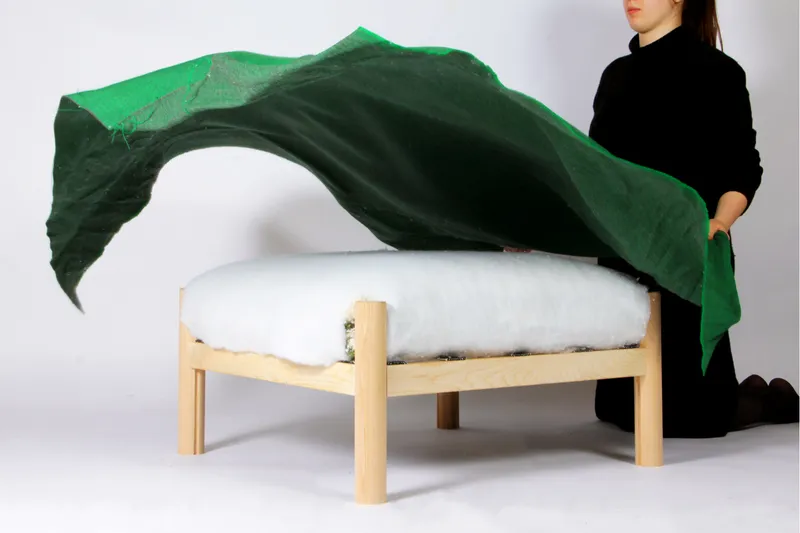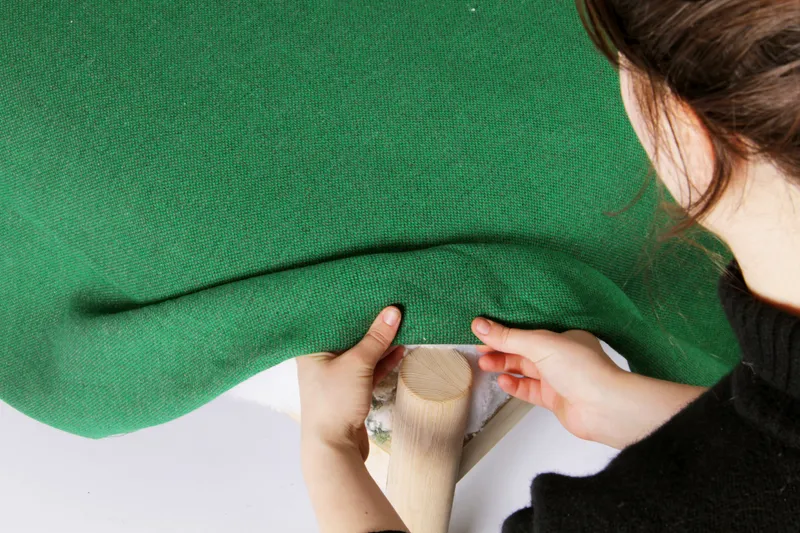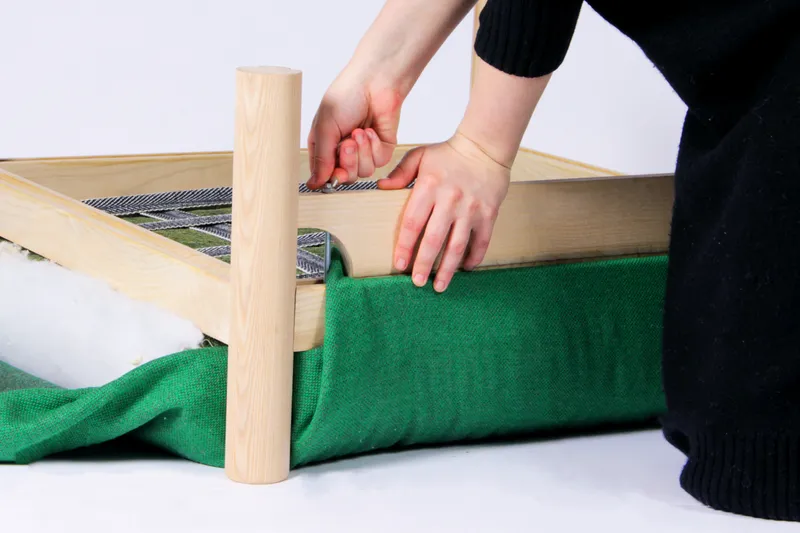TUCK
“When designers exercise insufficient care in the end-of-life of a product, they are not valuing the materials that made them” (Papanek, 2019)
During my year working in industry at HOWE London, I gained knowledge of many different upholstery processes on bespoke made-to-order products and re-upholstery of antiques. I was also exposed to the waste produced from practices such as pattern cutting and the permanent binding of different materials together through staples, tacks, sewing and adhesive.
Upholstered furniture is part of our everyday lives, and the fabric chosen is what makes it personal, but it is also the first thing to wear out, get dirty, or simply become outdated. However, throwing furniture away because of the external cover whilst the other materials are still functioning is wasteful and expensive. From this, my brief set itself: Designing an upholstery system that disassembles to minimise waste, save on re-upholstery costs, and extend the lifetime of an upholstered product.
Tuck is a new type of upholstery system using a plywood wedge clamping mechanism, rather than traditional upholstery techniques, to hold the fabric in place. Once the fabric is clamped, any excess material is folded and tucked behind the legs and underneath the webbed frame. This means the fabric is easily removable to be washed, repaired, recycled or replaced. The system also requires no pattern cutting but instead utilises the standard widths of fabric off the roll, only the length needing to be cut, meaning fabric waste is kept to a minimum.
